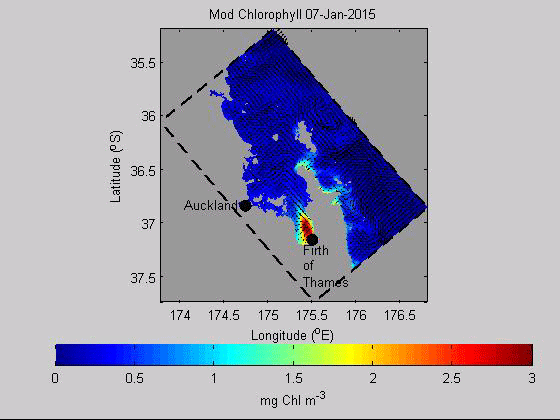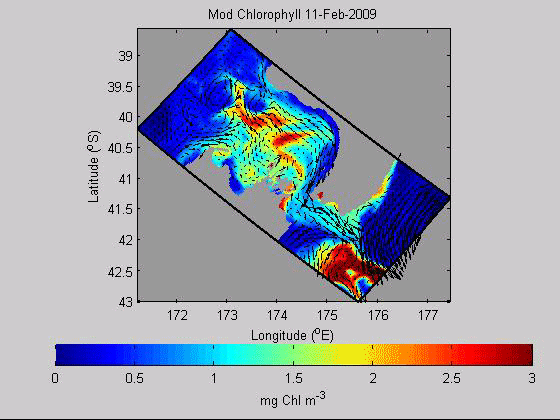These models can look at the movement of carbon into the water, through the food chain, and then the export to the lower depths of the ocean.
Model Summary
Biogeochemical models allow us to study the role of biological, chemical and physical processes in the ocean. These models are similar to the ones used to predict the weather; except we use them in the ocean to look at past features such as ocean currents and phytoplankton abundance. Although, phytoplankton sit at the bottom of the ocean food chain they are important for a large range of animals in the ocean - from the smallest fish to the largest whale.
Animated examples

Modelled surface chlorophyll for Hauraki Gulf. Chlorophyll can be used as an indicator as to how much phytoplankton are in the water. Nutrients that come out of the Firth of Themes act as food for phytoplankton and this can be seen as higher chlorophyll concentrations near the Firth of Themes. These chlorophyll blooms can be seen moving and changing directions as the ocean currents carry them around the Hauraki Gulf.

Modelled surface chlorophyll for The Cook Strait. Chlorophyll can be used as an indicator as to how much phytoplankton are in the water. Upwelling is a process whereby nutrients that are located deeper than where the light can penetrate are brought to the surface. The phytoplankton that live in the surface can then use these nutrients as food and they increase in number. This can be seen in the animation on the west side of farewell spit where the phytoplankton sometimes grow due to upwelled nutrients. The ocean currents then move these nutrients and chlorophyll blooms into Cook Strait and Tasman and Golden Bay.

